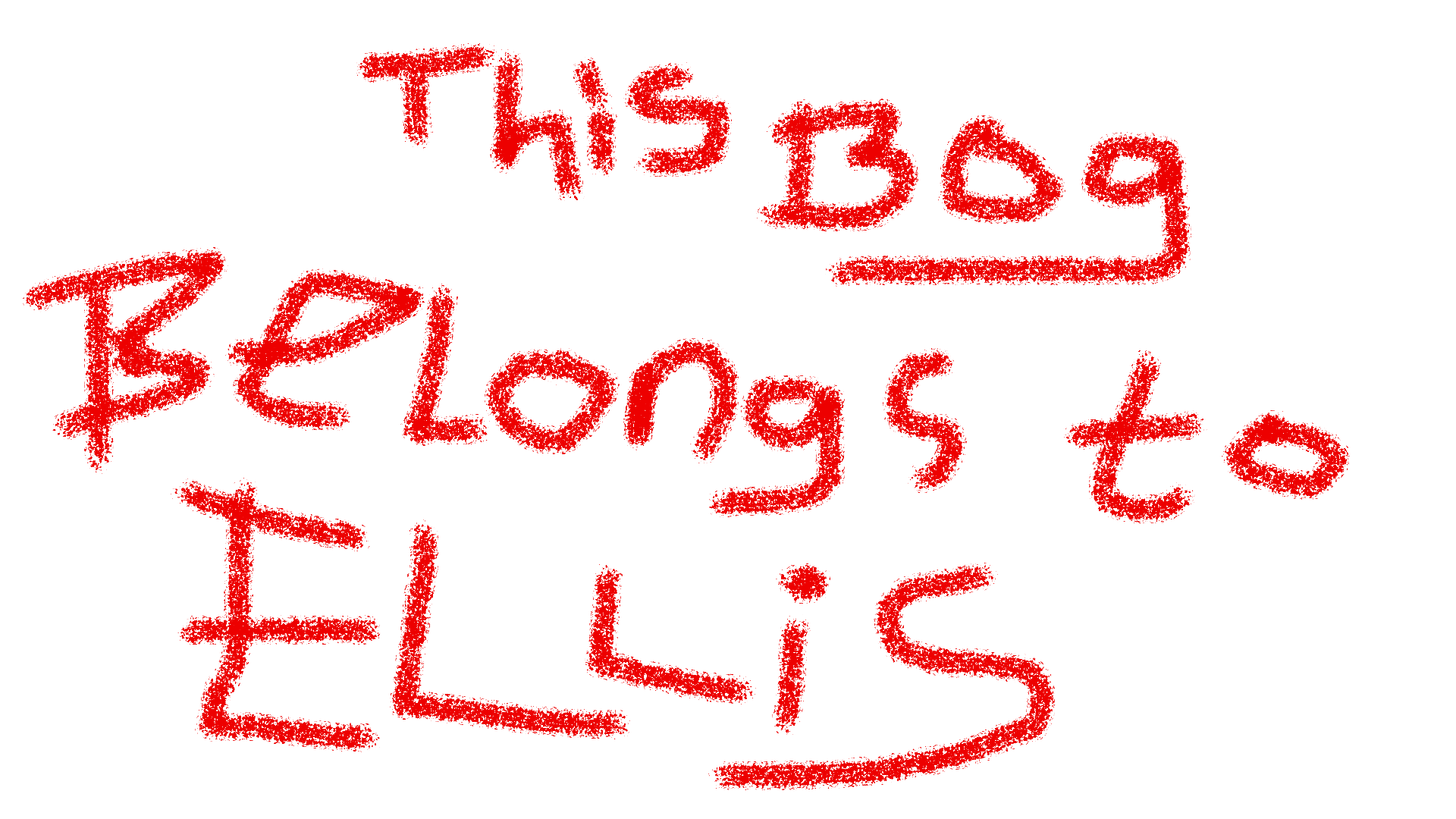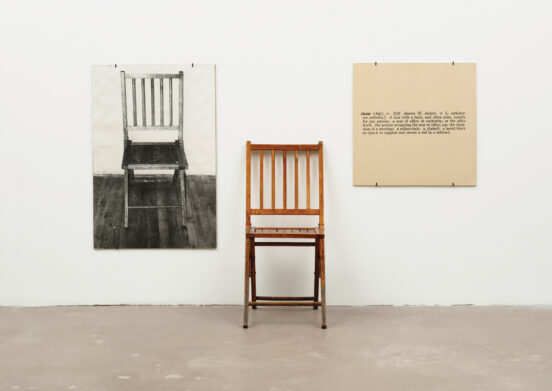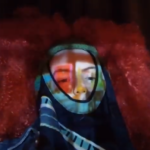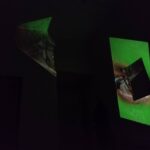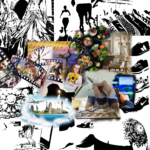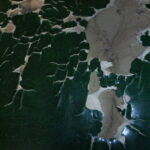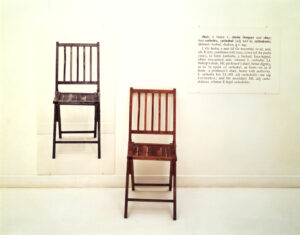
One and Three Chairs – Joseph Kosuth
Three chairs are presented in the gallery: a wooded chair, a picture of said chair and a printed dictionary description. Although that is not the order in which they are presented, in my line of thinking that this the logical progression between then, each is at a different stage of abstraction.
There’s nothing particularly special about the wooden chair, at least from what we can tell from looking at it. It is a ready-made, probably one of many in that style. The photo will be unique to wherever this work is shown, so that the physical chair before us is the same one depicted in the print. However it is an abstraction, a flattened version of the object with a singular point of view, depicting an event in time different to views, despite the chair’s presentation in both its existences being almost identical.
Beyond the visual representation is the written definition of a chair. It is not a specific description of the chair before us, but a broader, practical explanation of the word including its other uses, not all of which are (apparently) relevant to the wooden seat or photo. Sources such as these shape our understanding of the world, with chairs being a seemingly mundane example.
It’s title – One and Three Chairs – seems to suggest that one of these examples is separate, above or below the other two.
Kosuth did not craft the chair, take the photo or write the text, but it was his concept to bring them together in this way. Recreating this work in your kitchen will produce a piece of art of equal worth to a version of One and Three Chairs in a prestigious gallery – the same would generally not be true if you tried to recreate a work such as the Mona Lisa, where the only genuine copy is seen to be that of Leonardo da Vinci.
With chairs being my main focus of project I’m currently focusing on, their is a clear link between this piece and my work. I could try presenting my work in a similar way, with pictures of the chairs in the state I found them, on the wall behind their shattered remains. Having manipulated them to the extent that I have, do they still fit the definition of a chair that Kosuth has used in this piece? Maybe I could try forming a new definition, or destroying multiple texts and reconstructing them into something new to fit what I’ve made.

Record Without a Cover – Christian Marclay
With clear instructions against protecting this work with a cover, this record gains new sounds through dust and scratches it has picked up whilst being passed from collector to collector. You can hear an example to it here. It starts quiet, allowing the scratches and pops to be full appreciated as their own kind of musical noise, using the medium of a vinyl record to it’s full advantage. As it progresses, some audio samples from a range of sources begin to build, but ultimately each time it is played, the sound will be different, as the needle wears down the grooves. Some clips loop in a fashion that would make you scared the needle has got stuck, especially given the state that the records in. This further contributes to Marclay’s desire for the audience to be fully aware of the medium, and move “between being fooled and being aware of the illusion.”
As a way of revisiting the vinyl I was experimenting with, I could try scratching into them which will effect the level of noise and order in which grooves are played.
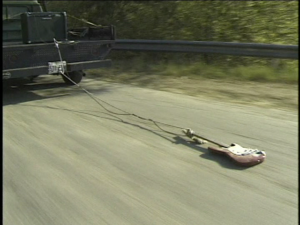
Guitar Drag
The is another piece by Christian Marclay in which he plugs an electric guitar to an amp, then ties a rope around it, attaching it to the back of a truck which then proceeds to drag it along the road (footages of this can be found here). A harsh droning noise is produced as the metal strings vibrate together due to the impact the guitar makes with the ground. It makes reference to the act of destroying a guitar at rock concerts, and to the many instrument destructions by fluxus artists, such as the pianos in one of my previous posts. Marclay when talking about this work also links it to much darker, violent acts such as the lynching of James Byrd Jr, who died after three white supremacists dragged him behind their truck in a similar fashion to this guitar.
Marclay intended for this work to be “seductive and repulsive at the same time”, which is certainly how I’m feeling now. I was initially intruiged by the strange sounds produced by the guitar, but his reference to this awful murder means my mind can’t stop thinking of the agony Byrd must have felt when in this exact situation, and makes me now question the intentions and ethics of this work, considering it was made only a year after the murder. Marclay’s statement on this work was clear that it was made for its shock value.

John Wood and Paul Harrison

Kalu’s works are big, colourful, sculptural forms which hang from the ceiling and grow out of the ground like an alien cocoon ready to hatch. Junk bits of card, foam and wool poke out between layers of adhesive tape, and spools of black tape dangle around them. Kalu has an intuitive working process which shifts with the sounds and rhythm created when applying the materials she works with. Through this she generates the form of her pieces which have a natural flow with each other and around the environment she is working in. There is no overall narrative to her work, but a lot of thought is put into the creation process, and the martials are found and chosen with her assistant, who helps Kalu (who is autistic) to communicate her thoughts.
I love the layers and bright, manufactured colours which pop out against the dull gallery walls. They are so complex and tightly wound that you don’t want to call them junk – her working process has elevated these ordinary materials into something extraordinary.. In my own work I have been using packaging tape, but I quite like Kalu’s application of it which is more methodical and creates full, bulging forms.
